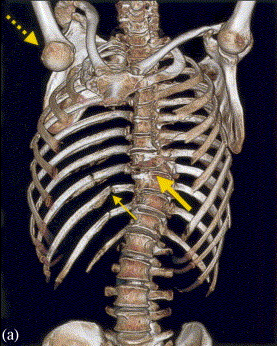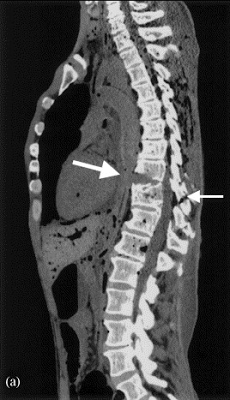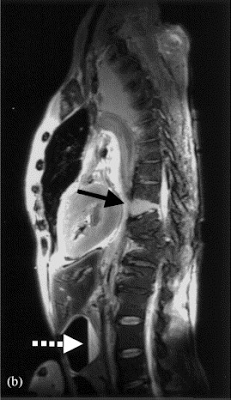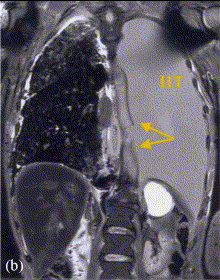Virtual Autopsy: Run over by a steamboat
In one of my last posts, I introduced the relatively new process of using MRI and CT scanning to perform virtual autopsies. Here I present a case where virtual autopsy was used to determine the cause of death of an unfortunate swimmer who was run over by a steamboat bucketwheel. Take a good look at fig 3 and you will instantly see the severity of the wounds inflicted on the body.
Case: A 53 year-old male swimmer was struck by the buckwheel of a steamboat in a local lake (fig 1). He suffered blunt trauma and sank. Divers found his body 5 days later at a depth of 18m.

Virtual Autopsy: "The body was wrapped in two radiological artifact free body bags to preserve anonymity and to prevent contamination of the radiological equipment."
First, a multi-slice computed tomography (MSCT) scan was performed on the body. This revealed comminuted fractures of the 8-10th thoracic vertebrae (fig 2). There were also fractures of the spinous processes of the 5, 8-11th thoracic vertebrae. The right shoulder was completely dislocated ventrally from the glenoid fossa (fig 2). Ouch. Fluid was found in the stomach, duodenum, trachea, and paranasal cavities. Both lungs were over inflated.
Next, an MRI was performed which revealed a complete rupture of the descending aorta at the level of the fractured 8-10th thoracic vertebrae (fig 3,4). A huge haematothorax was detected in the left thoracic cavity (fig 4 HT).
Generally, a complete rupture of the aorta will result in death due to fatal hemorrhaging at the site of the rupture.
Physical Autopsy: Confirmed all of the findings from the MSCT and MRI scans.
Cause of Death: A combination of fatal hemorrhage, caused by aortic rupture, and drowning.The study concluded that "virtual autopsy using combined post-mortem MSCT and MRI is a useful tool for documentation, visualization and analysis of the findings of blunt force trauma and drowning with a large potential in forensic medicine."SourceAghayev, E., Thali, M., Sonnenscein, M., Hurlimann, J., Jackowski, C., Kilchoer, T., & Dirnhofer, R. (2003) Fatal steamer accident; blunt force injuries and drowning in post-mortem MSCT and MRI. Forensic Science International. 152: 65-71.



